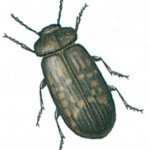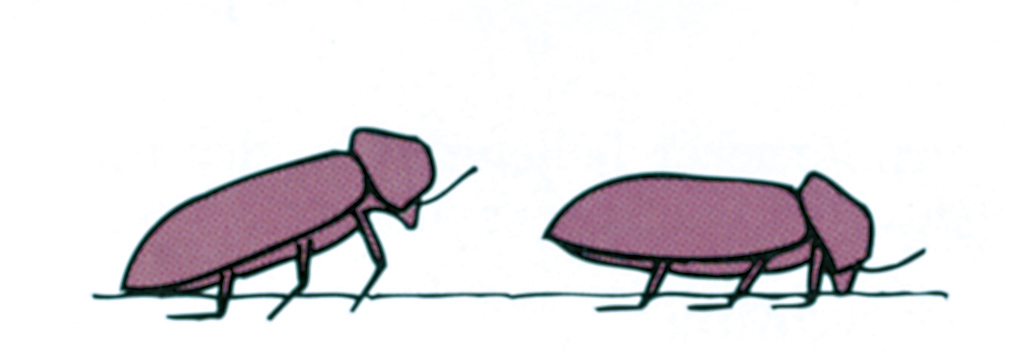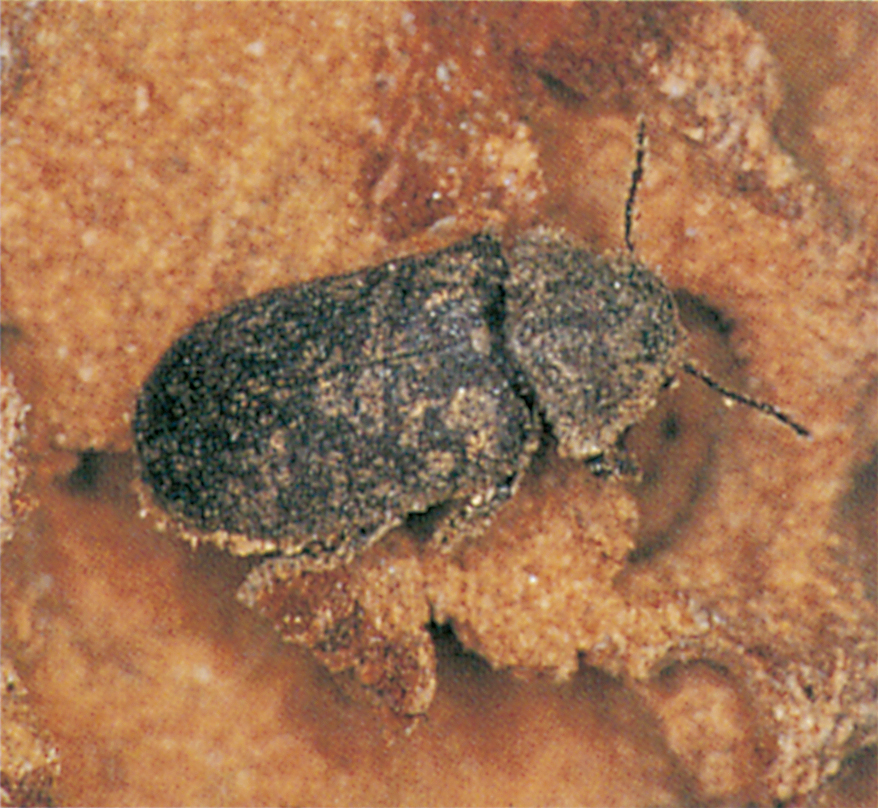(Latin: Xestobium rufovillosum)

This is one of the larger wood-boring beetles. The female lays up to 50 eggs in April-May. In structural timber the larvae may take 5-10 years to complete their development.

They pupate in the autumn and metamorphosis to the adult takes place a few weeks later. As in the preceding species the beetles remain in the timber until the following spring, when they gnaw their way out through characteristic exit-holes.
In nature, the eggs are usually laid on dead branches of various deciduous trees. In buildings, they are almost always laid on oak. The larvae can only survive in timber that is damp enough for fungi to flourish on it, so preventive measures should be the same as those recommended for the preceding species.





